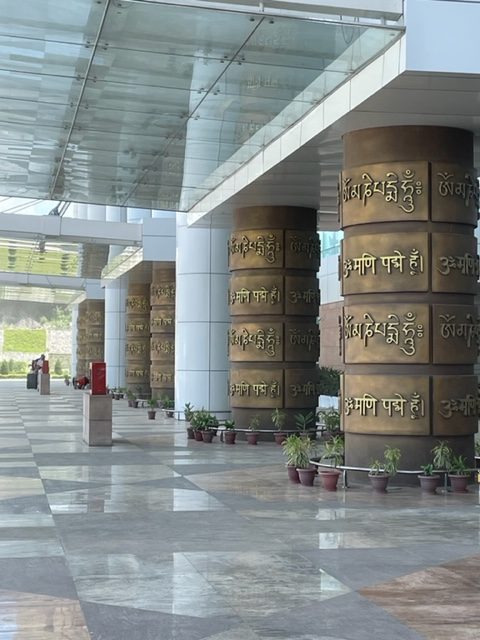For the West, the ‘Indian century’ may have already begun

In the minds of many Western writers and thinkers, the “Indian century” may have already begun, despite everything.
Despite the efforts of India’s BJP government to turn the country into a theocracy, an electoral autocracy, a one-party Hindu-desh (country) that relegates faith minorities to second-class status and tries to close down political opposition and media scrutiny.
What follows are two exhibits, one each from the UK and US and one piece of expert opinion from Japan. The Japanese commentary is important because along with India, Japan is emerging as the linchpin of US strategy in the Indo-Pacific.
Exhibit A is the BBC’s report on the April 20 verdict delivered by a court in Gujarat, home state of Prime Minister Narendra Modi, in a case about the 2002 Gujarat riots. Click here to read it.
Exhibit B is a March 23 opinion piece in the Wall Street Journal (WSJ) by Walter Russell Mead. It is headlined “India’s BJP Is the World’s Most Important Party”. The strapline is as follows: “It combines market economics, traditionalist values and populist rhetoric.” Click here to read the piece (paywall).
The expert opinion is a January 29 piece from Toru Takahashi, senior staff writer at Nikkei, the Japanese business daily that is world’s largest in terms of circulation. Click here to read it.
EXHIBIT A:
The BBC reported that all 68 people accused of the murder of 11 Muslims were acquitted. The piece provided little context beyond the following three sentences at various points in the story:
“The killings occurred after violence broke out in Naroda Gam district of Ahmedabad city on February 28, 2002.”
“Those tried in the case included former state minister Maya Kodnani and Babu Bajrangi, a former leader of the right-wing Hindu group Bajrang Dal.”
The report ended as follows:
“The riots in Gujarat left more than 1,000 people dead, mostly Muslims. The rioting began after 60 Hindu pilgrims died in a train fire blamed on Muslims in the town of Godhra. The violence was among India’s worst outbreaks of unrest.”
THE POINT ABOUT EXHIBIT A: The cautious tone of the report. Is the BBC especially wary at this point about not annoying the Indian government? It wouldn’t be surprising considering tax agents raided its Delhi offices on February 14, within weeks of it putting out a documentary that examined Mr Modi’s rise to power, his association with the Hindu right-wing and allegations about his role in the 2002 riots when he was chief minister of Gujarat.
For context, click here to read my openDemocracy piece: At 75, India and Pakistan look more and more like each other
Exhibit B:
On to the WSJ op-ed. Wikipedia describes the writer, Walter Russell Mead, as the James Clarke Chace Professor of Foreign Affairs and Humanities at Bard College. It says he has taught American foreign policy at Yale University and it adds that he is editor-at-large of The American Interest magazine. The magazine, incidentally, seems to be centre-right and rated high on accuracy, fact-checking and proper sourcing. They have, in the past, been critical of Donald Trump, which surely says something about the editor’s good sense.
But in his op-ed on India and its ruling party, Mr Russell Mead is wholly admiring. He writes : “After an intensive series of meetings with senior BJP and RSS leaders, as well as some of their critics, I am convinced that Americans and Westerners generally need to engage much more deeply with a complex and powerful movement. From a fringe of mostly marginalized intellectuals and religious enthusiasts, the RSS has become perhaps the most powerful civil-society organization in the world. Its rural and urban development programs, religious education and revival efforts and civic activism, staffed by thousands of volunteers from all walks of life, have succeeded in forming the political consciousness and focusing the energies of hundreds of millions of people.”
He goes on to describe his meeting with Yogi Adityanath, a Hindu monk who is as chief minister of Uttar Pradesh, and Mohan Bhagwat, “spiritual leader of the RSS”, the BJP’s ideological fount.
Mr Russell Mead explains that Mr Adityanath, “considered one of the most radical voices in the movement”, discussed the need to bring investment and development. So did Mr Bhagwat, who also “disavowed the idea that religious minorities should suffer discrimination or loss of civil rights”.
He adds that he got “the impression that the leadership of a once-marginalized movement wants to position itself as the natural establishment of a rising power and is looking to engage deeply and fruitfully with the outside world without losing touch with its social and political base”.
THE POINT ABOUT EXHIBIT B: While it is important to keep an open mind, surely it is credulous in the extreme to believe that the BJP or RSS would tell anyone, let alone an American academic and analyst, that the agenda is to cow (no pun intended) the minorities and teach them their place in the new India.
In fact, the WSJ piece underlines the extent to which the narrative is already trending towards the “Indian century”. But not everyone may be over the moon. Japan, for one.
Next up: Expert opinion from Japan on the ‘Indian century’
Also read:

